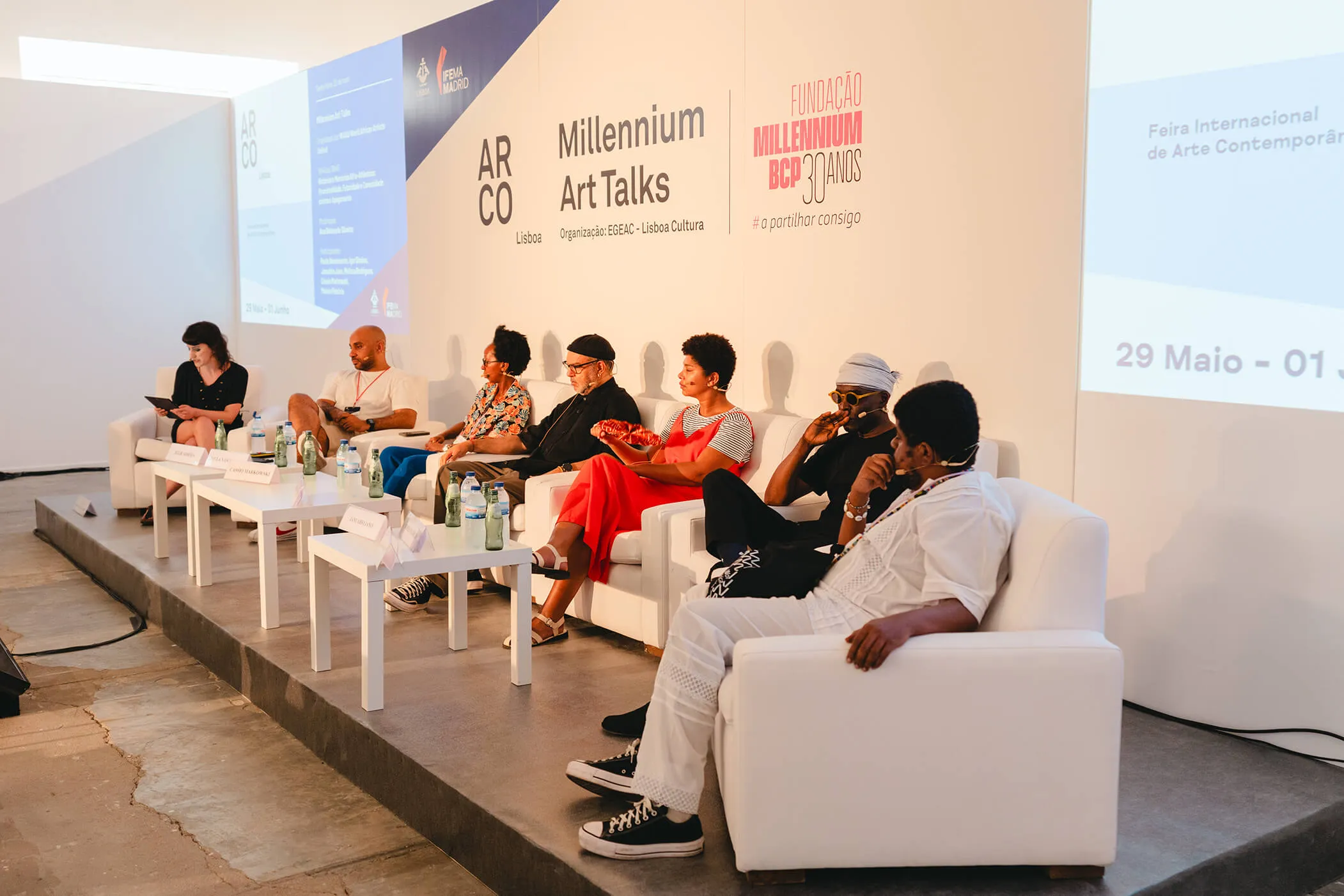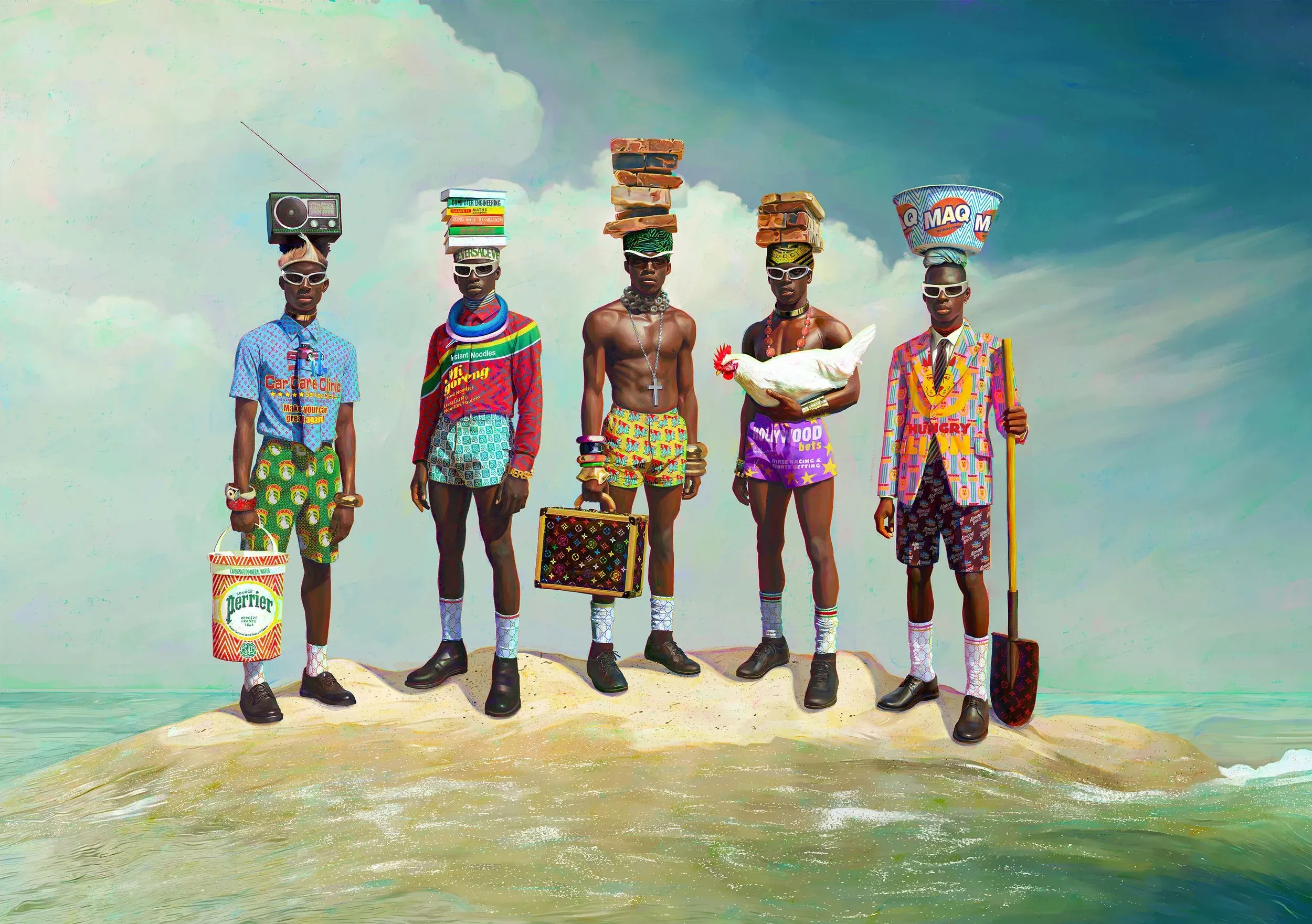Kamyar Bineshtarigh’s new series of works blurs the line between artist and curator, studio and gallery, offering a broad meditation on authorship, presence, preservation, and impermanence.
The artist’s second solo exhibition with the gallery, Group Show repeats and refines Bineshtarigh’s surface transfer technique in a study of lifted walls and floors from the studios of artists working in South Africa. The immersive mixed-media works give form to his curiosity around artists’ creative processes, with each work carrying layers of history and energy from its original site – the studio.
The collection of interiors and interiorities — not originally meant for exhibition — are adrift in the gallery setting, finding comfort embedded in the plaster and paint of their original rooms. At once archaeological samples, memorials and psychic exposures, the works of Group Show continue Bineshtarigh’s enquiry into the potential of these surfaces to still time and preserve history, while also highlighting the social exchange between the art practitioners that is fundamental to the transfer.
Group Show should firstly be noted as a key development of the artist’s wall transfer method, where cold glue is gradually applied to surfaces, creating a thickened skin that is then peeled off along with the paint, plaster and markings of the top layers. In Bineshtarigh’s 2023 solo exhibition 9 Hopkins, the process was an exercise in memory, a ‘digging’ into the surfaces of a complex of soon-to-be-demolished buildings in Salt River, Cape Town, where the artist’s studio was located. Although the threat of disappearance is not immediate in Group Show, the vulnerable quality of the surfaces sustains a sense of the technique’s sensitivity.
Some surfaces have not been tacked with references, drawn on, or painted. They are marked only by the spatial and material character of the particular studio architectures they are pulled from, bringing with them wall or floor paint, textures, or dirt. Others have been occupied with conviction: they are personal and layered, stacked with cues, references, sketches, spills and outlines. In such transfers, where notations are so immediately characteristic of their makers’ styles and thought trajectories, Bineshtarigh’s intervention of reframing them cannot help but beckon to postmodernist-era traditions of appropriation as art. But the intervention is clear: The artist’s wall samples and their delicate, uneven outer edges, recalling ruins or ancient tablets, materialise his fixation with memory and desire to capture space in time.
The archaeological samples implicate everyday marks as signs of life. For artists, though, marks are more self-conscious, staged and largely shaped, as Nolan Oswald Dennis contends, by the “overt demands of exhibition practices”.[1] What then of the work that never escapes the studio, the place of making before, and at best, despite the exhibition? Imiso Studios’ circular umsamo (ritual area), once painted on the floor with cow dung and clay, now hangs as Group Show’s aesthetic and conceptual outlier. With the studio replacing this spiritual holding pattern seasonally, the circle, designated for sharing food, drink, music and ancestral ceremony, carries with it months of Imiso Studios’ social life and gathering.
The ink of Mary Sibande and Lawrence Lemaoana’s collage cut-outs bleeds, a reddish dog raining lines of pigment against a grey-white wall holding faint impressions of its brickwork. The wall surfaces of Vusumzi Nkomo are hyper-citational in image rather than word: a sea of closely packed print-outs of object-centred conceptual art references, bad news, Coke adverts and ambiguous diagrams.
These walls are mysterious, exposing and ‘unresolved’, and yet Bineshtarigh’s process revolves around them. Social logistics are built around the doodles, visits are conducted to preserve paint splashes, and domestic flights are organised in hopes of gathering rejected notations. The studio visits are a serial event, with each of two to three layers of cold glue requiring days of drying before the slow and careful peeling can take place.
Splashes, spills and drips produce transfers, which read as abstract paintings in their own right. Alka Dass’s liquid cyanotype chemicals leave ethereal marks, while Andrew Kayser’s blue drips and tiny grey strips collect as a cramped audience. Sibusiso Ngwazi and Thokozani Mthiyane’s studio floor transfers read in the tradition of abstract expressionism: Ngwazi’s, confrontational; Mthiyane’s, gentle. Ed Young, Michael MacGarry and Nandipha Mntambo’s surfaces are quieter, defined by textural impressions, with Bineshtarigh having pulled a transfer of Mntambo’s 125-year-old brickwork studio wall, clay leftovers and all.
Crucially, Bineshtarigh’s transfers are not photographs, but samples, collections of actual unique surfaces that cannot be recreated, and no longer exist in the space of their making. Artist Daniel Buren’s 1979 essay “The Function of the Studio” argues that the artwork’s original place of belonging is the studio from which it comes, and that in a gallery or museum exhibition, the work becomes “foreign” to its new world: “Torn from their context, their ‘environment,’ they had lost their meaning and died, to be reborn as forgeries”.1 Bineshtarigh’s practice then, which transfers studio surfaces, and in turn implicates these studios’ spatial make-up within the exhibition space, contends with the parameters of Buren’s thinking, blurring the line between studio and gallery. In fact, in the case of Group Show, the artwork is only able to become itself once removed from its studio, the place in which it was labelled ‘not artwork’. It is through Bineshtarigh’s preservation efforts that the pulled surface is reborn as an artwork.
Thus, through the transfer of surface ownership via logistics of ‘the pull’, Bineshtarigh presents a conceptually unusual practice that often feels intimately touched and worked by the (other) artist’s hand. Brett Charles Seiler’s large studio wall transfer, for instance, looks like a Brett Charles Seiler artwork, scrappy Queer notations littering the spaces around nostalgic hints of painted monochrome portraits, sparse reference images and an off-white backdrop. Bineshtarigh’s gesture is not a claim over these hidden practices, but a hope to memorialise them, to still them long enough to become objects of study.
Perhaps Bineshtarigh’s transfers are always motivated by disappearance, their careful preservation of everyday histories betraying an understanding that spatial and geographic belonging are precarious and unstable (for the majority world in particular). It is a great irony that the focus of Group Show — the artist’s studio — forces Bineshtarigh out of his own and into a practice far more akin to that of the group show curator. Offering viewers the chance to enter the hard-won intimacies of several studio visits, Kamyar Bineshtarigh’s Group Show transfers destabilise the space of the studio, presenting it as historic ruin, as memorial, to the exhibition.
Source: Southern Guild





